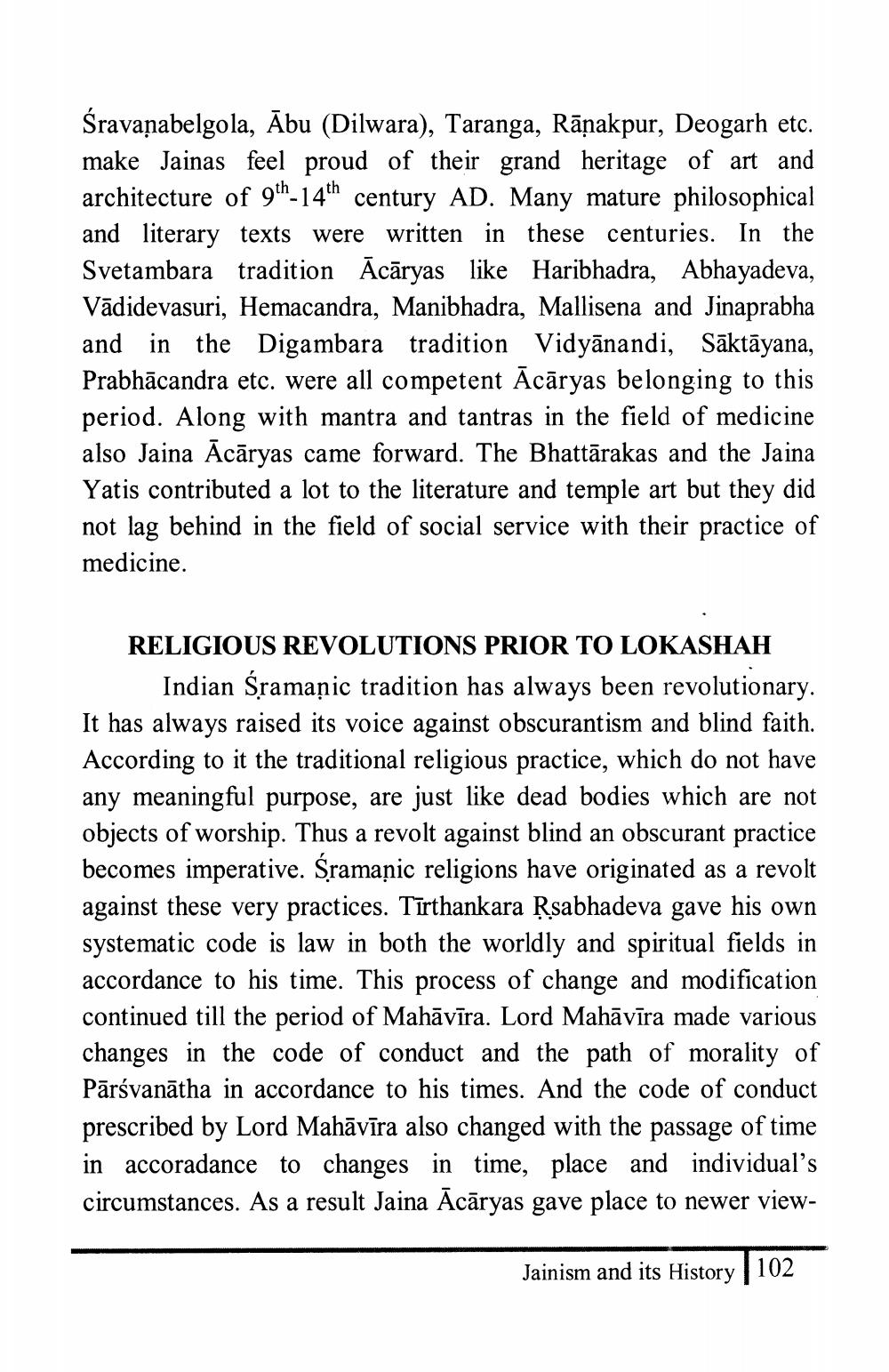________________
Śravanabelgola, Ābu (Dilwara), Taranga, Rāṇakpur, Deogarh etc. make Jainas feel proud of their grand heritage of art and architecture of 9th-14th century AD. Many mature philosophical and literary texts were written in these centuries. In the Svetambara tradition Ācāryas like Haribhadra, Abhayadeva, Vādidevasuri, Hemacandra, Manibhadra, Mallisena and Jinaprabha and in the Digambara tradition Vidyānandi, Sāktāyana, Prabhācandra etc. were all competent Ācāryas belonging to this period. Along with mantra and tantras in the field of medicine also Jaina Ācāryas came forward. The Bhattārakas and the Jaina Yatis contributed a lot to the literature and temple art but they did not lag behind in the field of social service with their practice of medicine.
RELIGIOUS REVOLUTIONS PRIOR TO LOKASHAH
Indian Sramanic tradition has always been revolutionary. It has always raised its voice against obscurantism and blind faith. According to it the traditional religious practice, which do not have any meaningful purpose, are just like dead bodies which are not objects of worship. Thus a revolt against blind an obscurant practice becomes imperative. Sramanic religions have originated as a revolt against these very practices. Tīrthankara Rsabhadeva gave his own systematic code is law in both the worldly and spiritual fields in accordance to his time. This process of change and modification continued till the period of Mahāvīra. Lord Mahāvīra made various changes in the code of conduct and the path of morality of Pārsvanātha in accordance to his times. And the code of conduct prescribed by Lord Mahāvīra also changed with the passage of time in accoradance to changes in time, place and individual's circumstances. As a result Jaina Ācāryas gave place to newer view
Jainism and its History | 102




